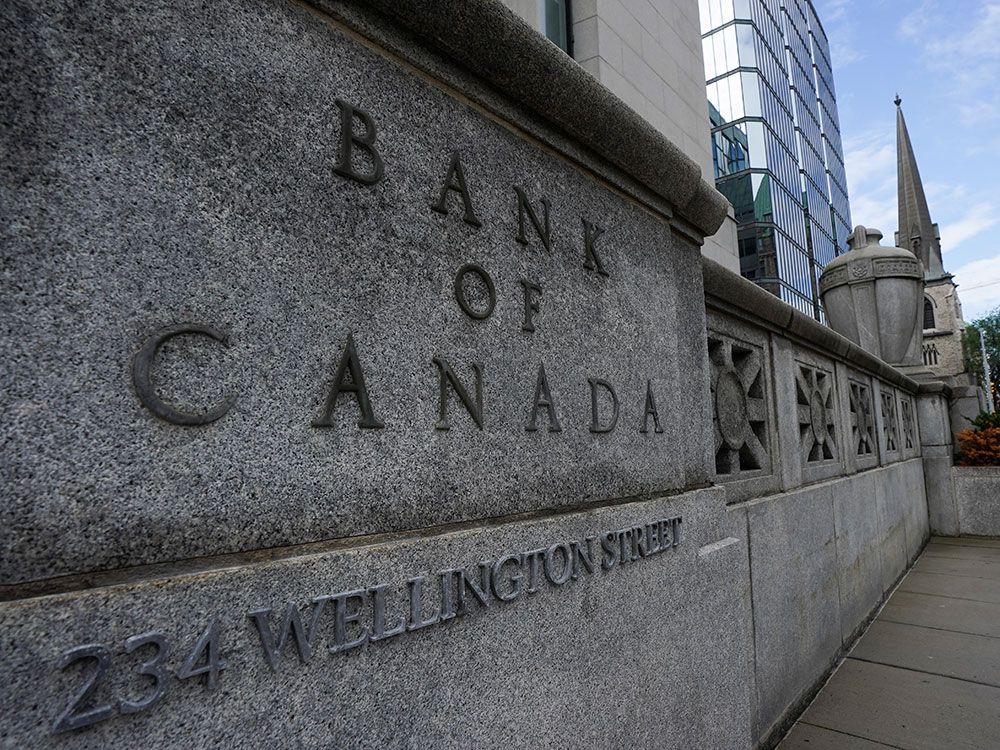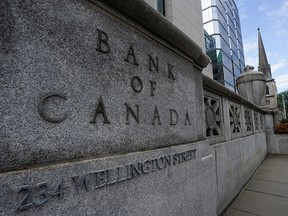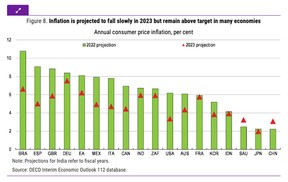OECD predicts Bank of Canada will hike interest rate to 4.5% in 2023

Global economic agency also cuts growth forecast to 1.5% next year

Article content
The Organisation for Economic Co-operation and Development expects the Bank of Canada to raise its policy interest rate to 4.5 per cent in 2023, a higher forecast than many economists who expect the rate to peak at four per cent.
Advertisement 2
Story continues below
Article content
The OECD cut its forecast for global economic growth in a report on Monday and warned that inflation could push major economies into recession.
Article content
Global growth is now projected to slow to 2.2 per cent in 2023, down from a June forecast of 2.8 per cent.
The OECD also cut its forecast for Canada’s GDP growth by 0.4 per cent to 3.4 per cent in 2022 and to 1.5 per cent in 2023, down 1.1 per cent from its earlier forecast.
“The global economy has lost momentum in the wake of Russia’s unprovoked, unjustifiable and illegal war of aggression against Ukraine. GDP growth has stalled in many economies and economic indicators point to an extended slowdown,” OECD secretary-general Mathias Cormann said in a statement.
The OECD warned that high inflation is becoming entrenched. Even before the Ukraine war, inflation was pushing above central banks’ targets in most G20 countries, but the conflict made it worse, raising prices on food, energy and industrial metals.
Advertisement 3
Story continues below
Article content
Inflationary pressures have become increasingly broad-based, said the OECD, as higher energy, transportation and other costs pass through into prices. Wage growth has also strengthened, especially in Canada, the U.S. and U.K., which puts pressure on a wide range of prices.
The OECD expects Canada’s inflation rate to stay at 6.9 per cent this year, up almost a percentage point from its June forecast. Inflation should cool to 4.5 per cent in 2023, higher than the Bank of Canada’s target range of between two and three per cent.

The OECD said further policy rate increases are needed in most major advanced economies to reduce inflation and these will likely involve a period of “below-trend growth.”
Policy rates are projected to rise 4.5 to 4.75 per cent in the United States, 4.5 per cent in Canada and 4.25 per cent in the United Kingdom because of the labour market pressures in these countries, the agency said.
Advertisement 4
Story continues below
Article content
The Bank of Canada’s current rate in 3.25 per cent.
-

Don’t see U.S. Federal Reserve slowing down this year: Canaccord
-

Bank of Canada says inflation headed in right direction but still too high
Figuring out how much to tighten is particularly challenging for central banks this time around because of the uncertainty about the outlook and potential spillovers from tightening in other countries, said the OECD. It’s been two decades since the last major policy tightening took place for many economies, and this time around the impact may take effect more quickly, as central banks tighten simultaneously.
“Careful monitoring will be required to guard against the risk that policy rates could be tightened excessively, or for longer than necessary to bring down inflation,” the report said.
Advertisement
Story continues below







